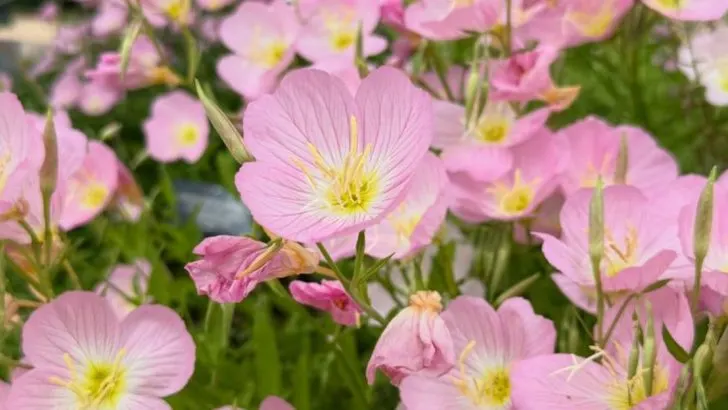The garden changes after dark—and some plants come alive in ways you don’t expect. While colors fade with the sun, certain blooms begin to release stronger, deeper scents, turning your evening garden into a quiet, fragrant sanctuary.
These plants evolved to attract nighttime pollinators like moths and bats, using scent instead of color to draw them in. For gardeners, that means unexpected waves of perfume-like aromas just as the world slows down.
In this article, we highlight 18 plants that intensify their fragrance at night—and explain why that’s not just a romantic detail, but a clever survival strategy. If you’ve never experienced your garden after sunset, these plants just might change your routine.
Night-Blooming Jasmine
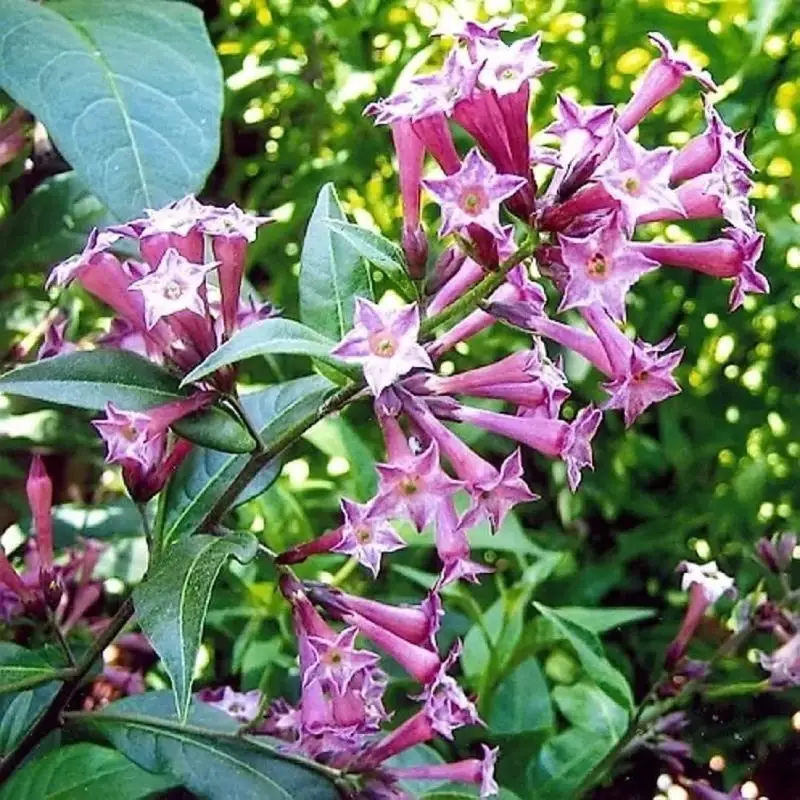
Night-Blooming Jasmine, known for its potent nighttime fragrance, captivates with an aroma that seems almost magical. As twilight sets in, its small, white flowers unleash a scent that can travel far and wide, filling the air with a rich, sweet perfume. This plant has adapted to attract moths by releasing its fragrance at dusk, ensuring pollination when these night creatures are active. Often used in perfumery, its scent is both soothing and intoxicating, making it a favorite among gardeners who love evening scents. Its presence in your garden is sure to create a romantic, aromatic ambiance.
Evening Primrose
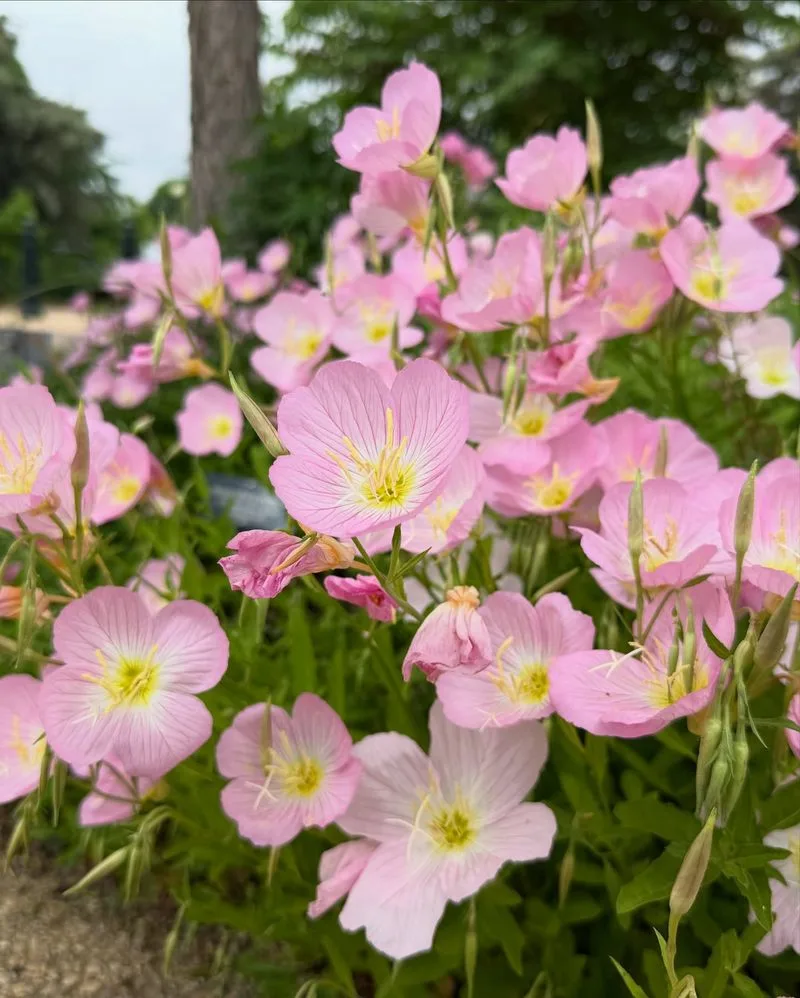
As the sun sets, Evening Primrose awakens, its yellow blooms unfurling to greet the night. This nocturnal beauty releases a subtle fragrance that becomes more prominent as darkness falls, attracting nocturnal insects for pollination. Its bright flowers are like small lanterns in the garden, providing a gentle glow that complements its aroma. Known not just for its beauty but for its historical medicinal uses, Evening Primrose oil is still popular today. This plant adds both visual charm and a delicate scent to any garden focused on nighttime allure.
Moonflower
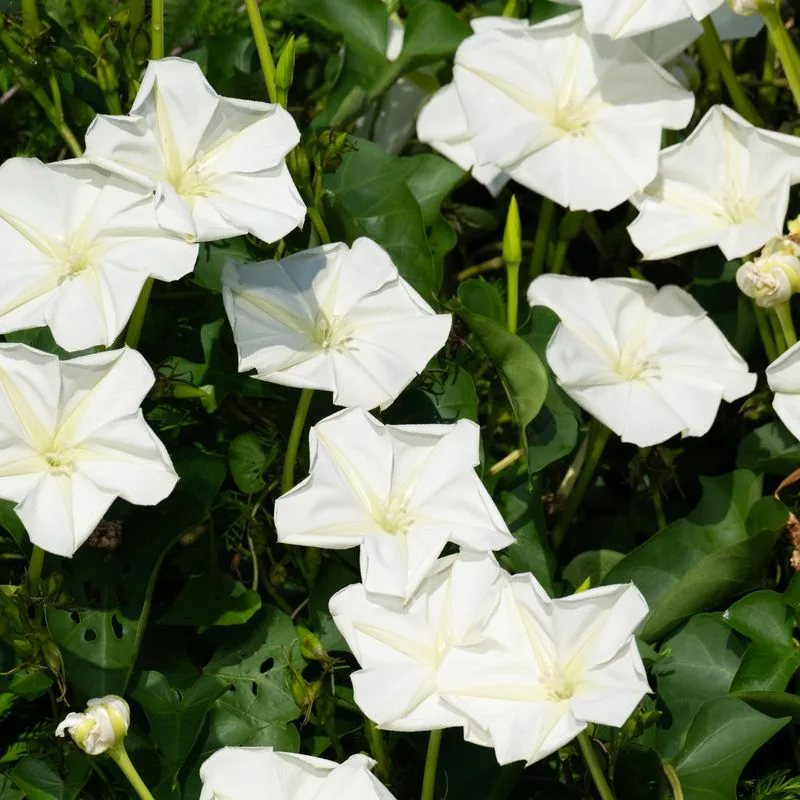
Moonflower stands out with its large, white, trumpet-shaped flowers that bloom as the sun dips below the horizon. Its sweet fragrance intensifies during the night, drawing in pollinators like moths. This vine originates from tropical and subtropical regions, providing a dramatic display in gardens. The moonflower offers a serene and enchanting experience as its blossoms reflect moonlight, creating a mesmerizing sight. Ideal for gardeners looking to capture the mystery of nighttime blooms, this plant ensures your garden is a nocturnal haven of beauty and scent.
Four O’Clock Flower
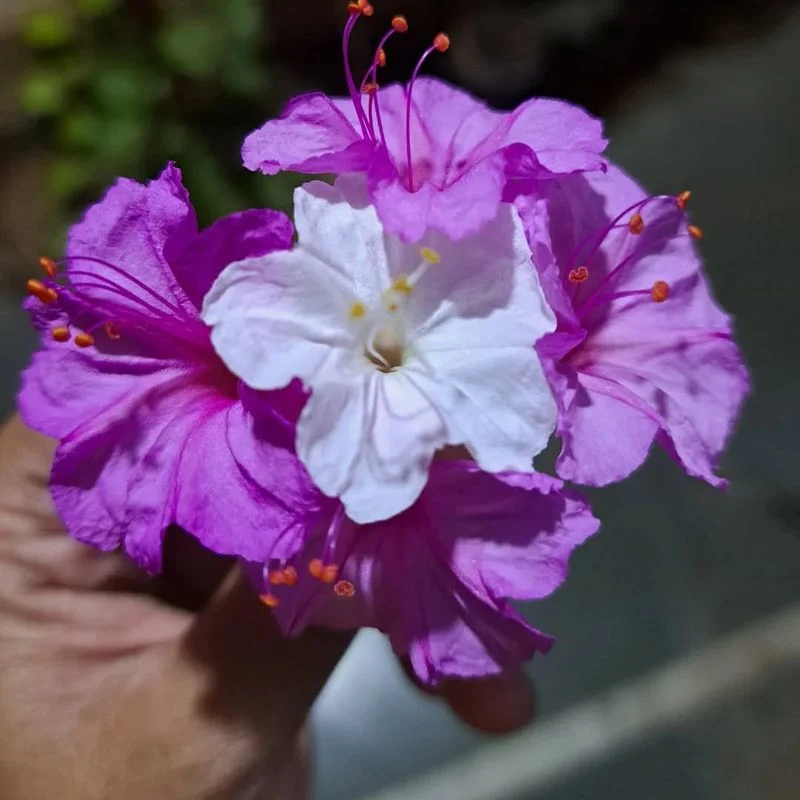
Four O’Clock Flowers burst into life as evening approaches, showcasing flowers in vibrant colors such as pink, red, and yellow. Their timing is perfect, releasing a pleasant fragrance just as the day cools. These flowers get their name from their habit of blooming in late afternoon, continuing through the night. Originating from South America, they add a splash of color and a sweet scent to twilight gardens. The intoxicating fragrance creates a welcoming atmosphere for nocturnal pollinators, making them a delightful addition to any evening garden.
Angel’s Trumpet
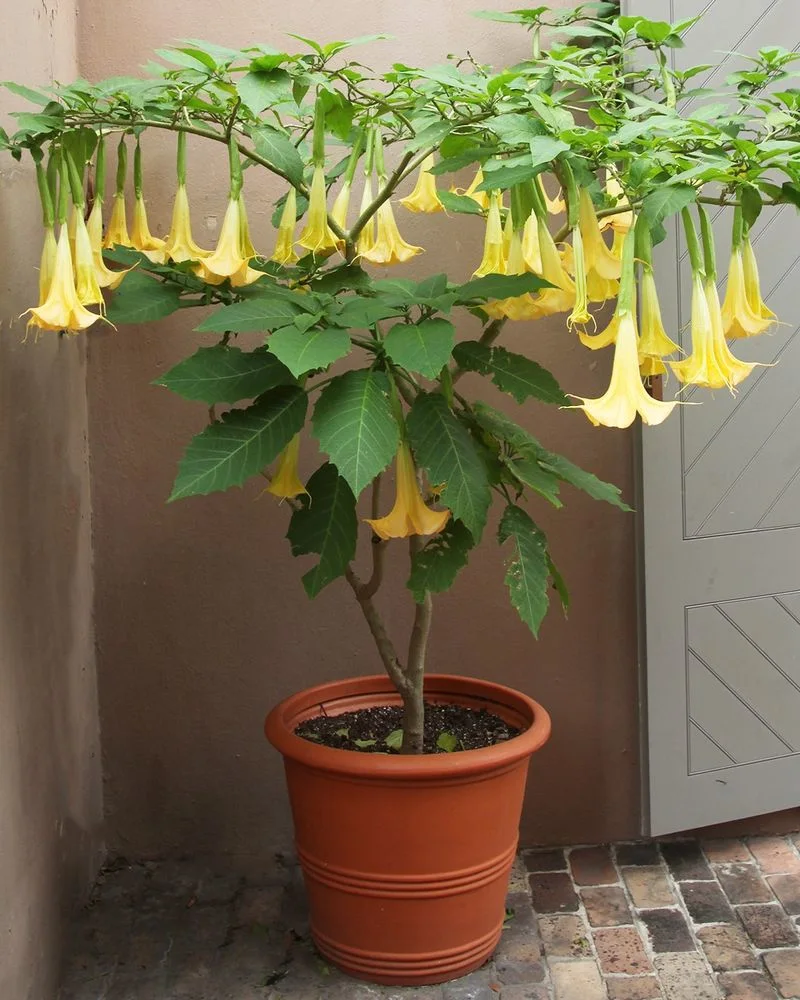
Angel’s Trumpet is known for its striking, pendulous flowers and intoxicating scent that intensifies in the evening. These large blooms, often in shades of white, pink, or yellow, release an aroma that is both alluring and complex. Originating from South America, Angel’s Trumpet has a mystique that draws in both insects and humans alike. However, caution is advised as it’s highly toxic if ingested. The plant’s beauty and fragrance make it a captivating choice for those seeking dramatic, fragrant additions to night gardens.
Brugmansia
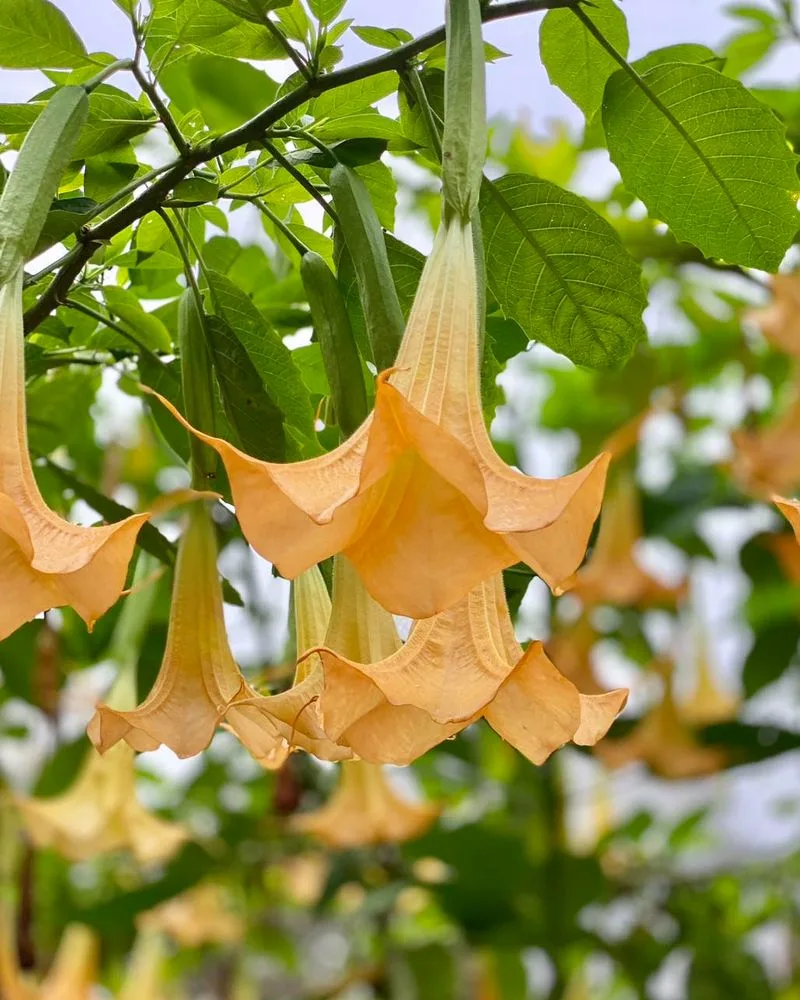
Brugmansia, often confused with its close relative Angel’s Trumpet, is celebrated for its huge, trumpet-shaped blooms and alluring fragrance. The scent intensifies at night, attracting moths and other nighttime pollinators. These flowers, which can be found in a range of colors, add a tropical flair to gardens. Native to the Andes, Brugmansia thrives in warm climates and prefers a sheltered spot. Despite its beauty, it is important to note its toxicity if ingested. This plant is perfect for those wanting to create a tropical, aromatic escape in their backyard.
Tuberose

Tuberose captivates with its creamy white flowers and a scent that grows richer as the night progresses. This aromatic delight has been a favorite in perfumery for centuries, known for its rich, floral fragrance. Originating from Mexico, Tuberose blooms during the night, making it a valuable addition to gardens where evening enjoyment is prioritized. Its heavy scent is often likened to that of coconut or vanilla, adding a layer of complexity to its appeal. This plant is perfect for those looking to envelop their garden in a romantic, exotic fragrance.
Night Phlox
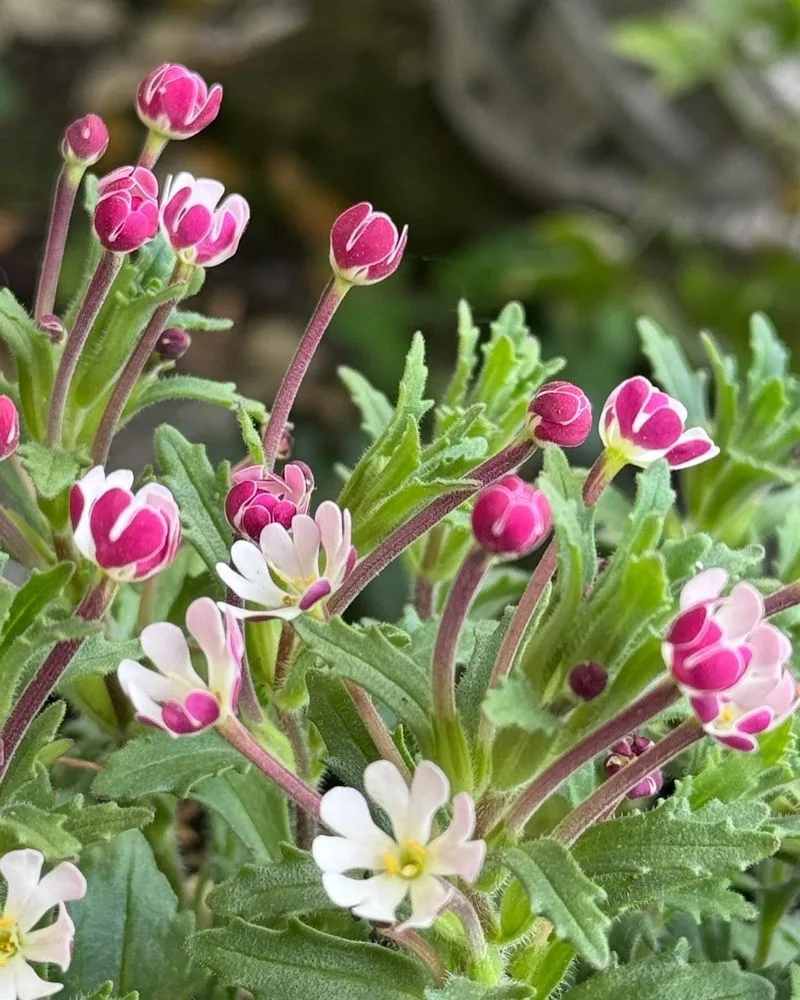
Night Phlox is affectionately known as ‘Midnight Candy’ due to its sweet scent that becomes pronounced after sunset. The flowers, small and star-shaped, open in the evening, releasing a fragrance reminiscent of honey or vanilla. This plant, native to South Africa, thrives in well-drained soil and adds a charming touch to gardens focused on nocturnal beauty. Its delicate appearance belies the powerful aroma it produces, making Night Phlox a delightful surprise in any evening garden setting.
Gardenia Augusta

Gardenia Augusta, famous for its intoxicating fragrance, emits a scent that is especially potent during the evening hours. Its creamy white flowers and glossy green foliage create a classic, elegant appearance. This plant prefers warm, humid environments and requires attention to thrive, including good drainage and regular watering. Often associated with romance and grace, Gardenia Augusta is a favorite in southern gardens. Its scent is a captivating addition to any garden looking to enhance its evening atmosphere with elegance and enchantment.
Honeysuckle
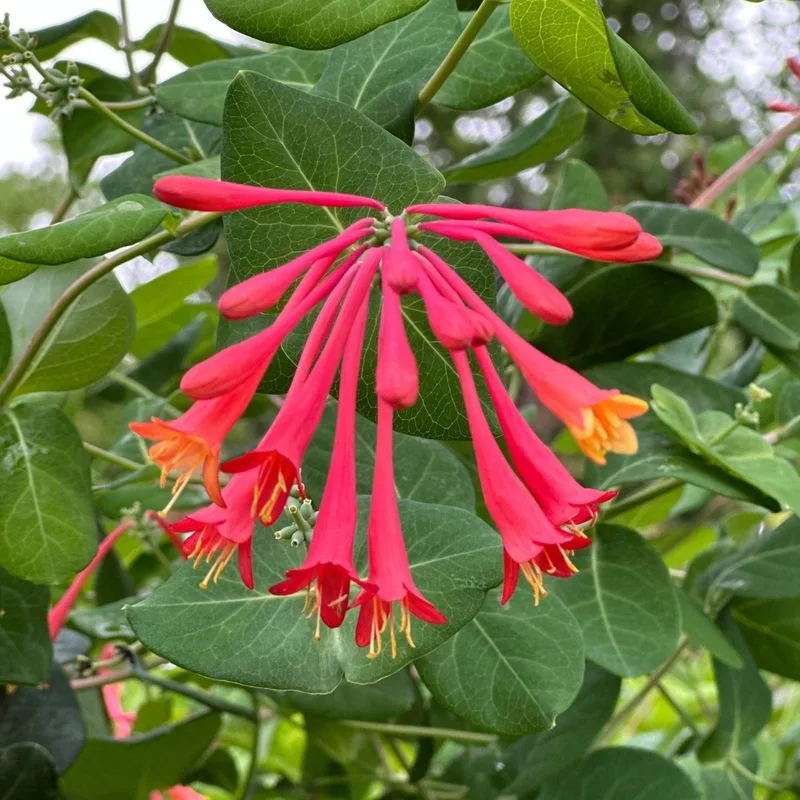
Honeysuckle is cherished for its sweet, nectar-like fragrance that becomes more pronounced at night. This plant’s twining vines and tubular flowers are a common sight in gardens, providing both beauty and aroma. Attracting pollinators like moths and hummingbirds, Honeysuckle comes in a variety of species, each with unique colors and scents. The plant is hardy and adaptable, often found draping over fences or trellises. Honeysuckle’s evening fragrance is a delightful reward for those who wish to create a sensory-rich nighttime garden experience.
Sweet Alyssum
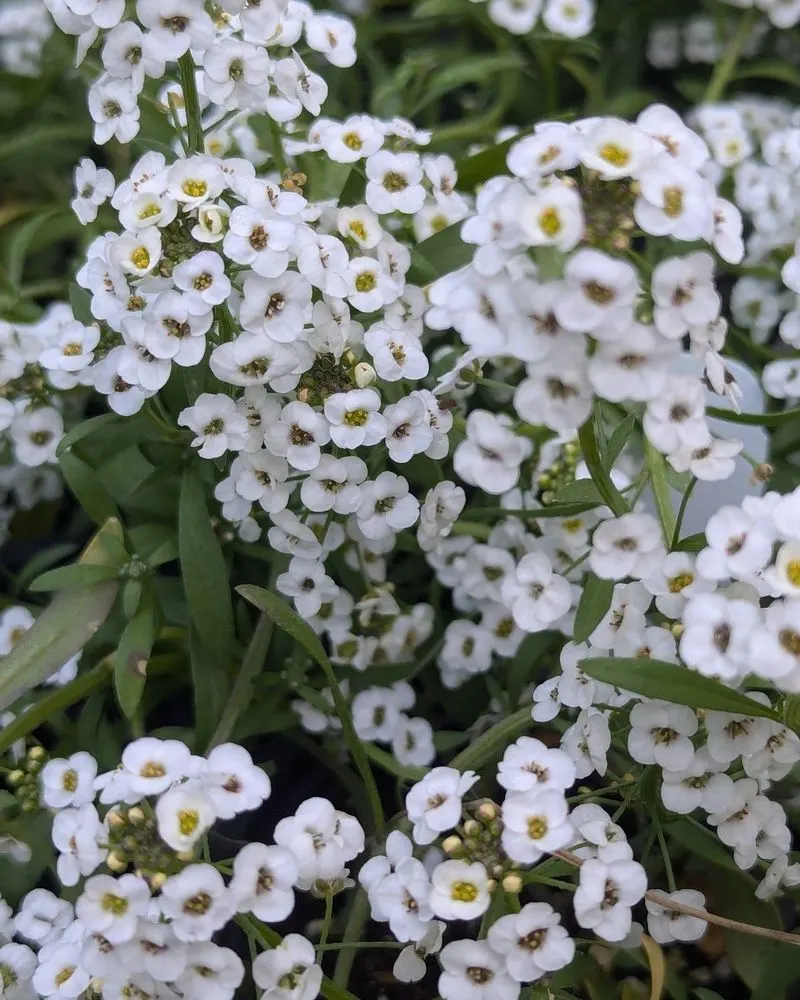
Sweet Alyssum, with its clusters of tiny white or purple flowers, offers a subtle yet sweet fragrance that intensifies in the evening. This low-growing plant is a popular choice for edging and ground cover, bringing a touch of elegance to garden paths and borders. Known for its resilience, Sweet Alyssum thrives in various climates and requires minimal care. Its evening scent attracts a variety of beneficial insects, making it both a fragrant and functional addition to any garden. This plant adds charm and allure to night gardens with ease.
Japanese Wisteria
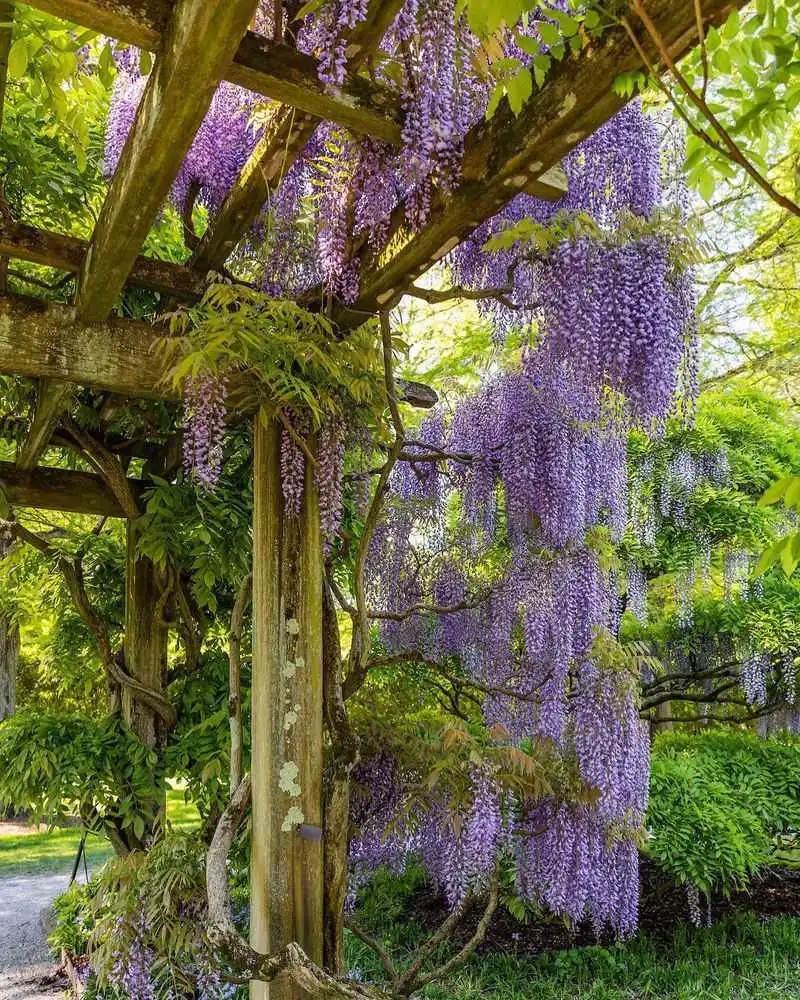
Japanese Wisteria captivates with its stunning, cascading flower clusters and a fragrance that intensifies as night falls. The plant’s twining vines can cover arbors and trellises, creating a romantic, shaded retreat. Known for its vigorous growth, Japanese Wisteria requires some maintenance to keep it in check. Its flowers, appearing in shades of lavender and purple, are a feast for the senses, offering both visual appeal and a delightful scent. This plant enhances the ambiance of any garden, especially when enjoyed during peaceful evening hours.
Jasmine Sambac
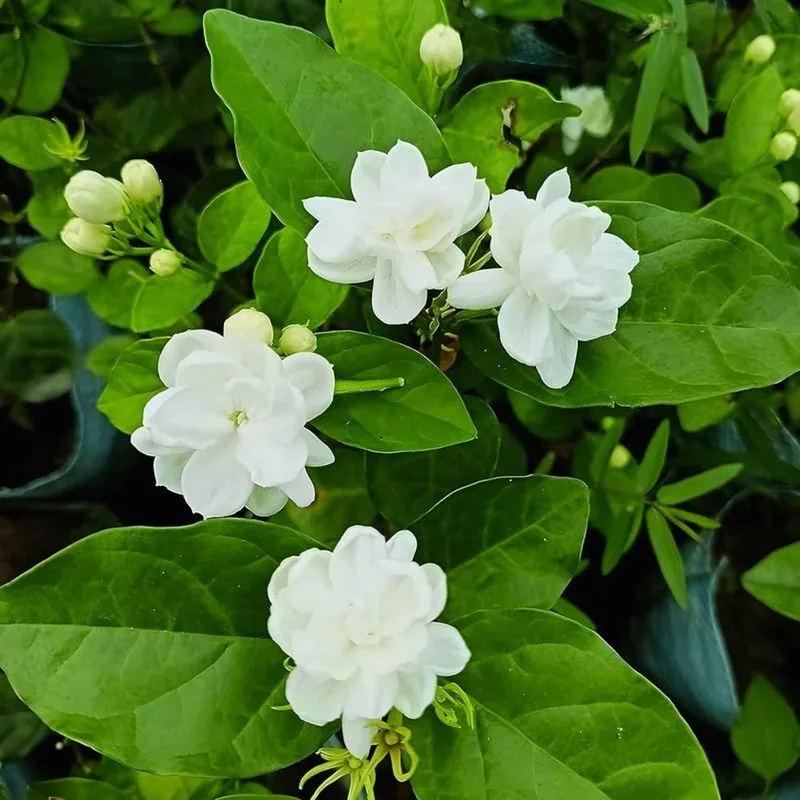
Jasmine Sambac is renowned for its powerful, exotic fragrance that fills the air as darkness falls. Its small, white flowers are not only used for ornamental purposes but also in traditional teas and perfumes. Native to Southeast Asia, this plant thrives in warm climates and requires well-drained soil. Jasmine Sambac’s enchanting aroma is both calming and invigorating, making it a popular choice for gardens dedicated to sensory experiences. Its scent can transform an ordinary garden into an exotic paradise after sunset.
Datura
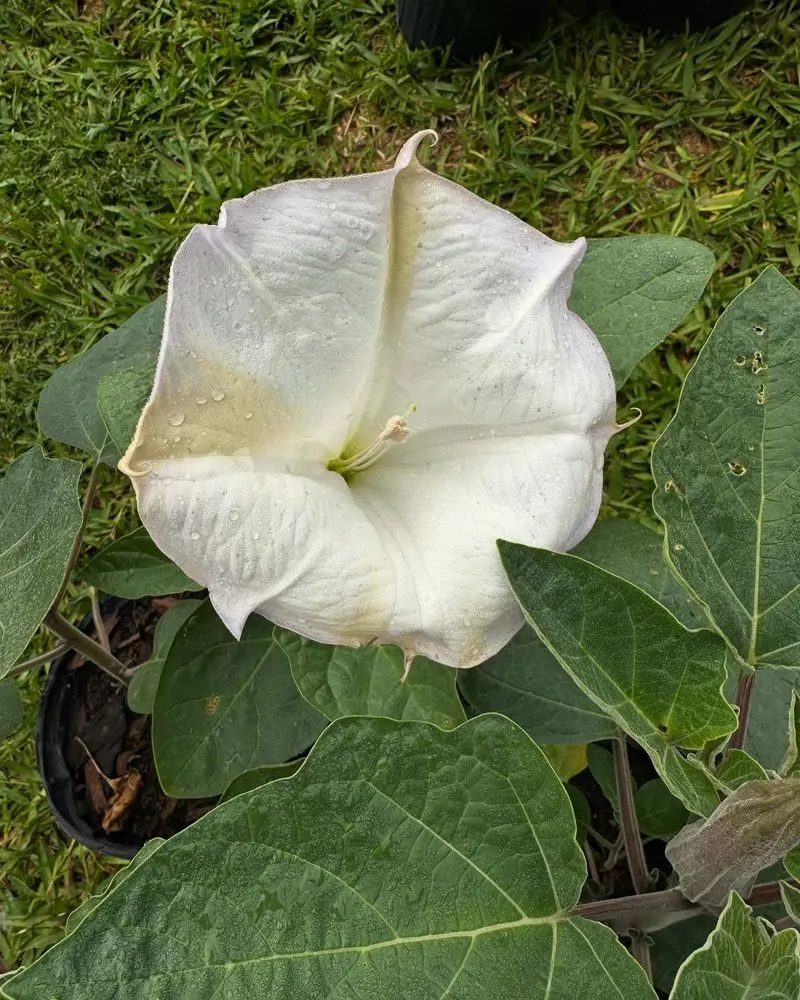
Datura, also known as Devil’s Trumpet, enchants with its large, trumpet-shaped flowers and a fragrance that becomes more intense in the evening. The plant’s blooms are often white or purple, creating a striking contrast against its dark green leaves. Originating from Central and South America, Datura requires careful handling due to its toxic properties. Despite its dangerous reputation, the plant is beloved for its beauty and nighttime scent, attracting moths and adding a mysterious allure to gardens that celebrate nocturnal wonders.
Marvel of Peru
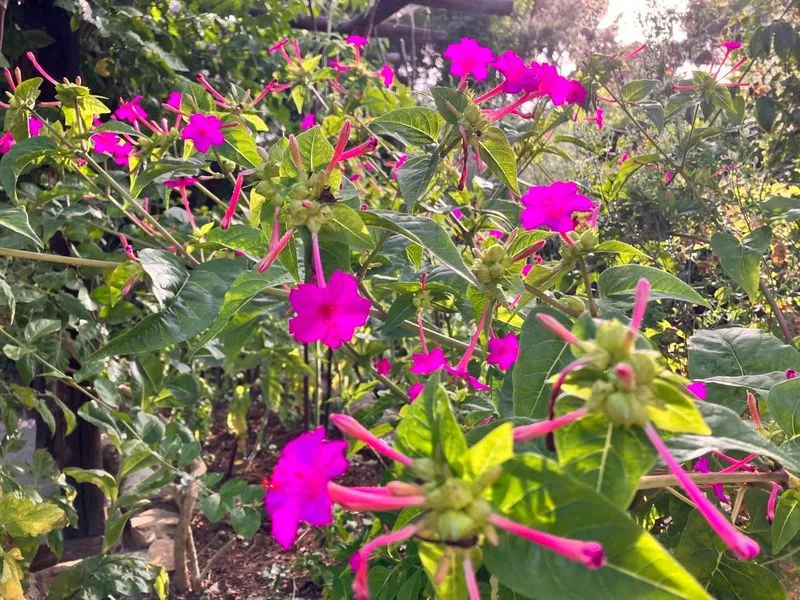
Marvel of Peru, also known as Mirabilis jalapa, surprises with its vibrant flowers that open in the late afternoon and emit a sweet fragrance throughout the night. This plant is known for its ability to produce flowers of different colors on the same plant, adding to its charm and mystery. Native to the Andes, it thrives in well-drained soil and is relatively easy to grow. Its evening scent attracts moths and other night pollinators, making it a delightful addition to gardens focused on evening enjoyment.
Nicotine Plant
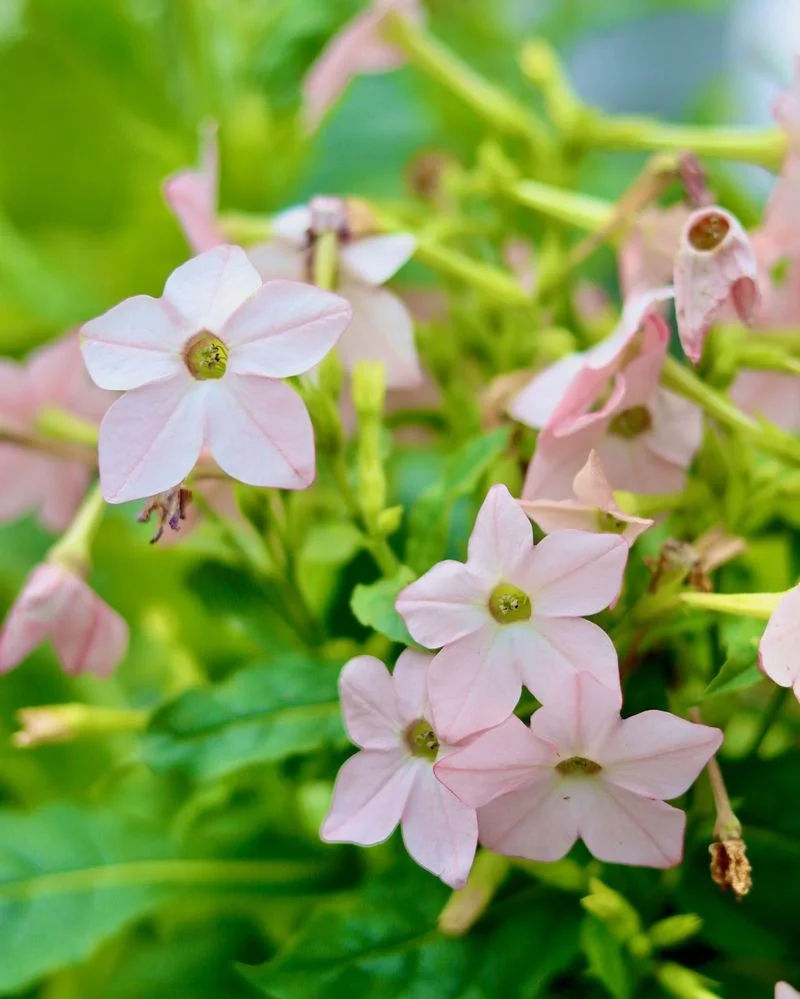
The Nicotine Plant, often overlooked, surprises with its tubular flowers and a fragrance that intensifies at night. These blooms, typically white, pink, or light green, open in the evening, releasing a sweet scent that attracts moths. Though related to the tobacco plant, this species focuses on beauty rather than harvest. The Nicotine Plant thrives in sunny spots with well-drained soil, making it an easy addition to gardens seeking aromatic, low-maintenance options. Its evening fragrance offers a pleasant olfactory experience after sunset, enhancing the garden’s nighttime ambiance.
Cestrum Nocturnum
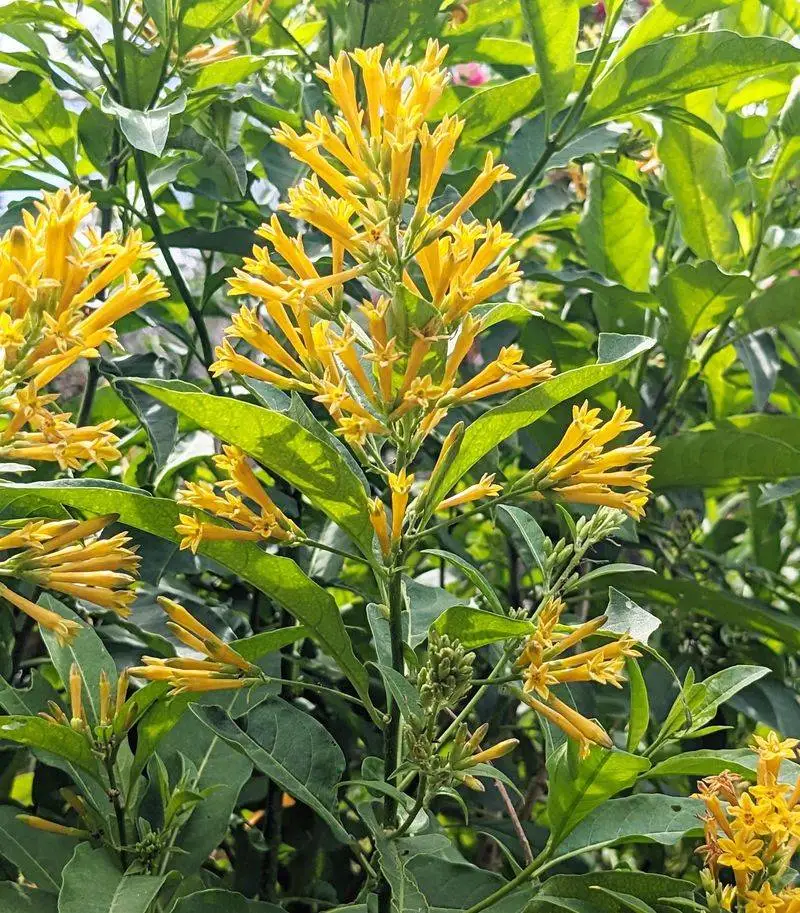
Cestrum Nocturnum, or Night-Blooming Jessamine, is famed for its intense fragrance that perfumes the air after dark. Its small, tubular flowers, though modest in appearance, pack a powerful aromatic punch, attracting nocturnal pollinators. This plant thrives in warm, tropical climates and requires a sheltered spot to flourish. Often used in traditional medicine, Cestrum Nocturnum adds both beauty and scent to gardens focusing on night-blooming species. Its aroma is unforgettable, transforming evening garden strolls into a sensory delight.

